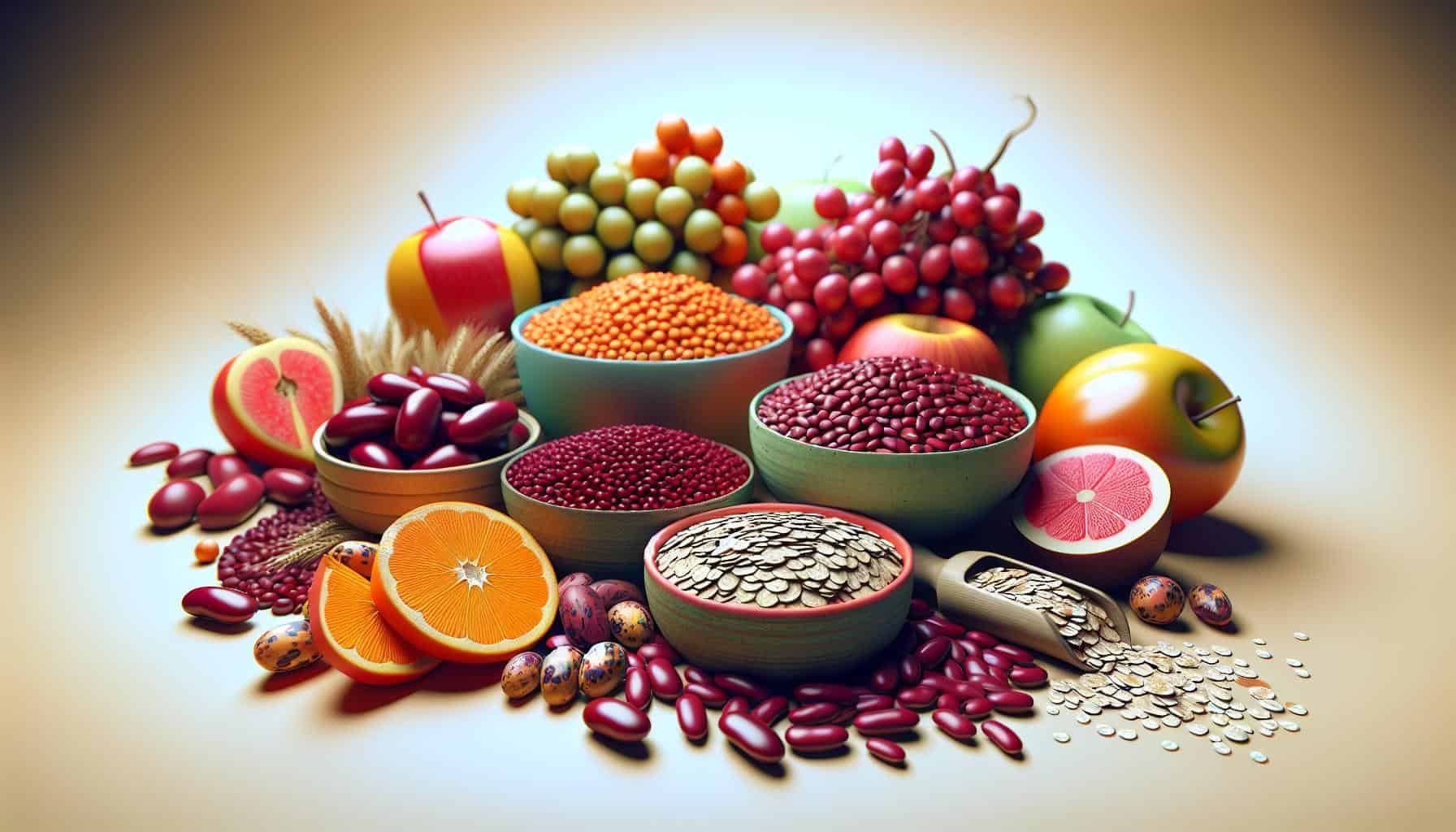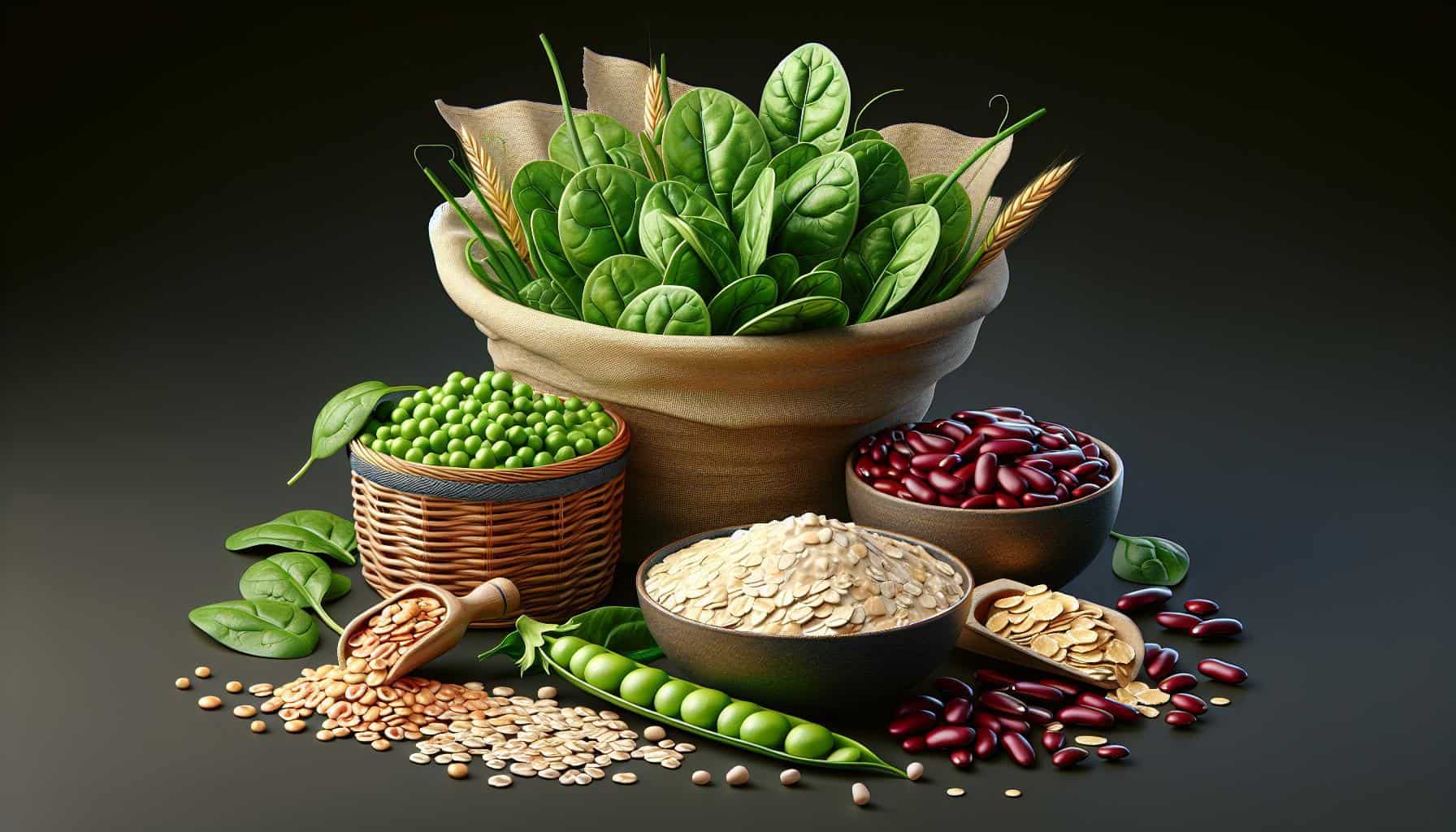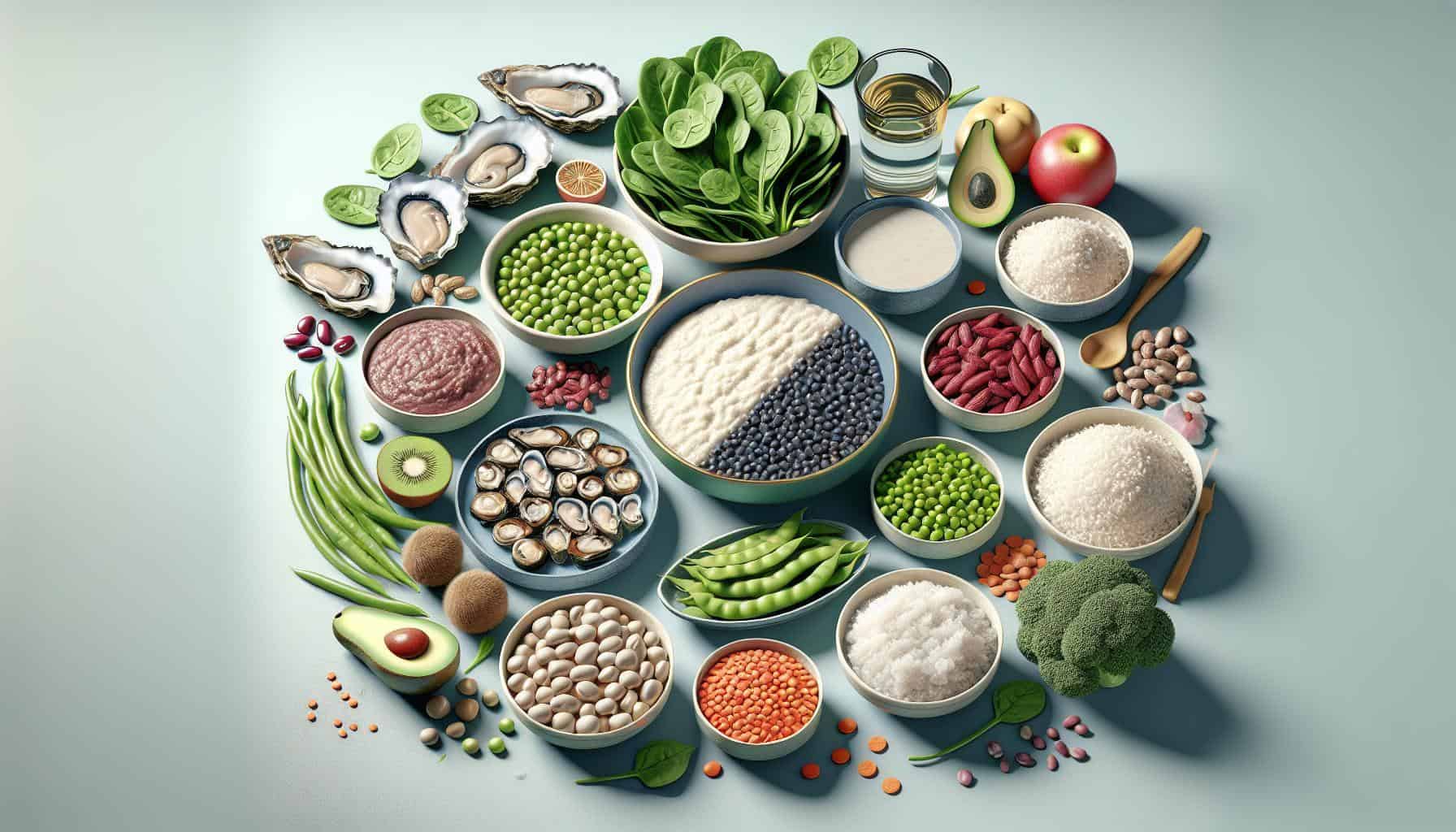Top Foods Rich In Iron: Cultivating a Meat-Free Diet
Looking to boost your iron intake without relying solely on red meat? You’re in luck, as a variety of foods are teeming with this vital mineral. It’s not just about keeping anemia at bay; iron plays a crucial role in your overall health, from bolstering your immune system to keeping your energy levels up.
Seafood lovers, rejoice! Oysters pack a hefty iron punch, with just four large ones delivering 7.8 mg. And if you’re aiming for a plant-based diet, there’s a plethora of iron-rich options to explore. From the iron and protein powerhouse of lentils to the surprising iron content in a cup of cooked peas, your path to meeting your daily iron needs is both delicious and diverse.
Benefits of Iron-Rich Foods
Iron is a pivotal nutrient in your diet, playing a crucial role in forming hemoglobin, a key component of your red blood cells. Without sufficient iron, your body can’t produce enough hemoglobin, and you may develop anemia, leaving you feeling tired and weak. Incorporating iron-rich foods is a simple yet effective way to ward off these symptoms and maintain your energy throughout the day.
Aside from preventing anemia, iron improves muscle strength and concentration. Your body requires iron to help your muscles store and use oxygen. Low iron levels can lead to muscle fatigue and impair your ability to concentrate and perform mental tasks. By eating foods high in iron, you’re not just boosting your blood’s oxygen-carrying capabilities; you’re also enhancing your mental and physical performance.
Your immune system also benefits from iron. This nutrient is essential for immune cell proliferation and maturation, particularly lymphocytes, which are integral to your immune response. That’s why iron deficiency can make you more susceptible to infections and illnesses. By upping your iron intake, you’re directly supporting your body’s defenses.
For those looking to manage their weight, iron-rich foods like red kidney beans provide a perfect blend of nutrients that promote satiety. With 5 mg of iron, 13 grams of fiber, and 15 g of plant protein per cup, they’re a wholesome choice. A study from The American Journal of Clinical Nutrition found that a half-cup serving of legumes might aid in weight loss and help maintain a healthy weight due to their filling nature, without the necessity of caloric restrictions.
Eating foods rich in iron also plays a hand in heart health. Oats, for example, are not just an iron-packed breakfast; they also boast a high fiber content that’s known to reduce the risk of heart disease, stroke, obesity, and type 2 diabetes. The American Heart Association emphasizes the importance of fiber, which is abundantly found in oats, with 100 g serving up nearly 22 mg of iron.
Importance of Iron in the Diet
 You’re aware that iron is a fundamental mineral necessary for survival, but its significance in your diet goes beyond just preventing anemia. This powerhouse nutrient is a vital component of hemoglobin, the protein in your red blood cells that carries oxygen from your lungs to the rest of your body. Without adequate iron, your body can’t produce enough healthy oxygen-carrying red blood cells, leading to fatigue, weakness, and a host of other health issues.
You’re aware that iron is a fundamental mineral necessary for survival, but its significance in your diet goes beyond just preventing anemia. This powerhouse nutrient is a vital component of hemoglobin, the protein in your red blood cells that carries oxygen from your lungs to the rest of your body. Without adequate iron, your body can’t produce enough healthy oxygen-carrying red blood cells, leading to fatigue, weakness, and a host of other health issues.
Iron also plays an essential role in maintaining healthy cells, skin, hair, and nails. It’s involved in a variety of bodily functions, including energy production and the synthesis of some hormones and connective tissues. Your muscle function depends on iron as well—it’s critical for creating the muscle protein myoglobin, which stores and diffuses oxygen within your muscle cells.
Beyond its role in oxygen transport and cell maintenance, iron contributes to brain function. Proper levels of iron help improve concentration, cognition, and sleep. It’s also instrumental in the immune response; iron is necessary for the growth and maturation of immune cells, especially lymphocytes, which help protect your body against infections.
For those managing their weight, iron-rich foods should be on your radar. Iron can directly influence your metabolism, which in turn can facilitate weight loss when paired with a healthy diet and exercise. Foods high in iron provide a dual benefit in weight management—they are often high in protein and fiber, which leaves you feeling fuller longer, reducing the likelihood of overeating.
Ensuring you have enough iron in your diet isn’t just about the quantity—it’s also about absorption. Vitamin C greatly enhances iron absorption, so pairing iron-rich foods with vitamin C-rich fruits and vegetables is a smart strategy for maximizing iron uptake.
Food Item | Iron (mg) | Additional Nutrients
|
|---|---|---|
White Rice (1/3 cup) | 3 | Low in fiber |
Lentils (1/2 cup cooked) | 3.3 | 8g Protein, Rich in Polyphenols |
Red Kidney Beans (1 cup) | 5 | 13g Fiber, 15g Plant Protein |
Instant Oats (100g) | 7.2 | High Fiber, Lowers risk of heart disease |
Oysters ( |
Red Meat Alternatives for Iron Intake
Searching for alternatives to red meat to boost your iron levels? You’ll be relieved to know there’s a variety of non-red meat options that pack a powerful iron punch.
Seafood, especially oysters, stand out as excellent sources. Just four large oysters not only provide a substantial 7.8 mg of iron but also contribute around 5 mg of zinc, which is vital for immune health. Pairing these mollusks with vitamin C-rich foods can further enhance iron absorption, making oysters a doubly beneficial choice.
Don’t overlook the humble pea in your quest for iron. A single cup of peas contains about 2.5 mg of iron, along with bone-strengthening calcium and magnesium. Easily integrate peas into your meals by mixing them into salads or rice dishes for an unassuming yet significant iron boost.
For a speedy iron-filled start to your day, consider instant grits. A half-cup serving of instant grits offers a notable 7.1 mg of iron. Combine it with foods high in vitamin C for breakfast, and you’re well on your way to fulfilling your daily iron requirement.
Grains like white rice can also contribute to your iron intake. A third of a cup of white rice nets you 3 mg of iron. Serve it alongside other iron-rich foods, such as beans or chickpeas, to create a meal that’s both satisfying and rich in this essential mineral.
Legumes are powerhouses when it comes to iron content. For instance, lentils provide an impressive 3.3 mg of iron per half-cup serving and introduce about 8 g of protein. A dish as straightforward as an Italian lentil and broccoli stew becomes a no-brainer for an iron-boosting dinner.
Consider red kidney beans for an additional iron source. A cup of these beans packs 5 mg of iron, with the added bonus of 13 g of fiber and 15 g of protein. Integrating beans into your diet can also contribute to weight management, thanks to their satiating properties.
By incorporating these red meat alternatives into your diet, you’re not only diversifying your palate but also effectively managing your iron intake. Remember, pairing these foods with vitamin C-rich options enhances absorption, paving the way for optimal health benefits.
Iron-Rich Seafood Options
When exploring iron-rich seafood, oysters are a standout choice. Packed with iron, just four large oysters provide you with an impressive 7.8 mg of iron and nearly 5 mg of zinc. Zinc isn’t just a bonus—it’s a critical mineral for maintaining a healthy immune system. Oysters are not just flavorful but also offer a significant nutritional punch. They’re a superb way to infuse your diet with natural sources of essential nutrients.
Adding peas to your seafood dish is another clever way to bump up your iron intake. You might be surprised to learn that a cup of cooked peas contains about 2.5 mg of iron. Not to mention, they’re also a good source of nutrients beneficial for bone health, such as calcium and magnesium.
If you’re in a rush but need an iron fix, consider instant grits for breakfast. A quick and satisfying option, a half-cup of instant grits contains 7.1 mg of iron. Grits can serve as a quick breakfast choice that not only satisfies hunger but also contributes to your daily iron requirements, ensuring you start your day strong and energized.
Cooking with white rice can also be a simple solution to increase your iron levels. Just 1/3 cup of white rice offers 3 mg of iron. Pair it with other iron-rich foods such as lentils or chickpeas, and you could meet a sizable portion of your daily iron needs in a single meal.
Speaking of lentils, these legumes are iron powerhouses. A half-cup serving of cooked lentils boasts a hefty 3.3 mg of iron and also provides about 8 g of protein. Lentils aren’t just iron-rich; they also come with a significant share of polyphenols, antioxidants known to reduce the risk of chronic diseases.
For a high-protein, iron-enhanced snack, turn to edamame. Consuming two half-cup servings of edamame racks up 3.5 mg of iron, alongside other valuable nutrients like potassium, fiber, and vitamins C and A, making these young soybeans an excellent choice for a nutritious snack.
Iron-Rich Plant-Based Foods
 When looking to boost iron intake, plant-based foods offer a treasure trove of options. Peas, for instance, are not just a staple in many cuisines but also a smart iron-packed choice. Surprisingly, a single cup of peas contains approximately 2.5 mg of iron. But that’s not all; they’re abundant in other key nutrients that aid in overall health, particularly calcium and magnesium, which play a crucial role in bone strength and maintenance.
When looking to boost iron intake, plant-based foods offer a treasure trove of options. Peas, for instance, are not just a staple in many cuisines but also a smart iron-packed choice. Surprisingly, a single cup of peas contains approximately 2.5 mg of iron. But that’s not all; they’re abundant in other key nutrients that aid in overall health, particularly calcium and magnesium, which play a crucial role in bone strength and maintenance.
Transitioning to the breakfast table, instant grits have become a quick and nutritious option for starting your day right. Just a half cup of instant grits provides an impressive 7.1 mg of iron. Being fortified with iron makes them a convenient and quick-fix meal that fills you up with both essential nutrients and energy.
For those who prefer a more traditional breakfast, oats could be your go-to. Not only do they offer a hearty start to your day, but just 100 grams can serve up nearly 2.2 mg of iron. Moreover, oats are synonymous with heart health thanks to their high fiber content, which has been associated with reduced risks of multiple health issues including heart disease and diabetes.
Beans, such as red kidney beans, serve as another powerful iron ally. Just one cup gives you 5 mg of iron, along with 13 grams of fiber and 15 grams of plant-based protein. They’re not only nutrient-dense but also beneficial in weight management due to their satiating properties.
Lastly, don’t underestimate the power of spinach, made famous by Popeye for good reason. A mere half-cup of cooked spinach delivers 3 mg of iron at only 21 calories. This leafy green is also packed with numerous vitamins and should be a staple in your iron-rich, plant-based diet.
Incorporating these plant-based foods into your regular diet ensures that you’re not only getting enough iron but also benefiting from a varied nutritional profile that can contribute to overall health and well-being.
Conclusion
Boosting your iron intake doesn’t have to be a chore or limited to red meat. You’ve discovered a treasure trove of iron-rich foods that cater to various tastes and dietary preferences. From the briny depths with oysters to the humble pea and the versatile options of lentils and edamame, there’s no shortage of choices. Remember, pairing these iron-packed foods with vitamin C sources can skyrocket your absorption rates, making every bite count. So go ahead, mix and match these nutritional powerhouses into your meals and enjoy the myriad of health benefits they bring to your table. It’s all about finding the balance that works for you and embracing the variety that these iron-rich foods offer.
Frequently Asked Questions
Does drinking water help with iron?
Drinking water itself does not increase iron levels, but staying hydrated can support overall health, including the maintenance of iron levels. Proper hydration helps in the functioning of every system in the body, including the circulatory system which transports iron throughout the body.
How do you fix low iron ASAP?
To quickly address low iron, take prescribed iron supplements and consume vitamin C-rich food to increase absorption. Consult a healthcare provider for the appropriate dose and to discuss your dietary options.
Do blueberries contain iron?
Yes, blueberries contain iron. In approximately 100 grams of blueberries, there is 0.3 mg of iron, which can contribute to the daily iron intake alongside other iron-rich foods.
How can I get my iron up in 24 hours?
Increasing iron levels significantly in 24 hours is challenging. However, consuming iron-rich foods such as red meat, seafood, beans, dark leafy greens, and pairing them with vitamin C-rich fruits can help enhance iron absorption. Always consult with a healthcare professional for urgent health concerns.
What food is highest in iron?
Liver and organ meats are typically the highest in iron; however, for those seeking non-meat options, lentils and spinach are substantial plant-based sources. Combining these with foods rich in vitamin C can increase iron absorption.

